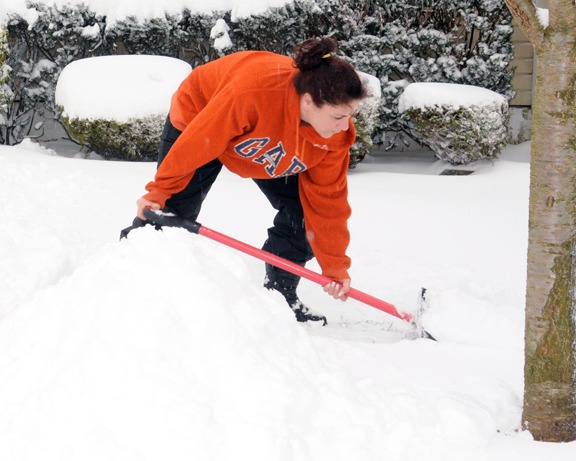Winter Weather 2010
Out shoveling? Here are some safety tips
Posted
With about a foot of snow on the ground already and the possibility of more throughout the day, shoveling is on the agenda for many local residents.
Dr. Steven Walerstein, vice president of Medical Affairs at the Nassau University Medical Center in East Meadow, offered a few safety tips on those planning to work or play outside during and after the snowstorm.
To shovel, or not to shovel
"The first question people should ask is: 'Should I be doing shoveling at all?" Walerstein said.
He explained that people who are out of shape, especially those who are at-risk for heart disease, could be in danger and should not shovel or exert themselves in the cold. If you have concerns, consider finding someone to do the work for you, he said.
Dress appropriately
"If you are going to shovel make sure you dress appropriately and protect yourself against cold," Walerstein advised.
He highlighted the head, hands and feet as key areas to protect with hats, gloves, heavy socks and boots. For the body, multiple layers of clothing are crucial, Walerstein said.
Prepare and pace yourself
"Make sure you stretch before going out," Walerstein said. "We see a lot of patients with backaches and shoulder aches."
Shoveling snow requires the use of many parts of your body, and doctors advise people to stretch before going out to remove snow.
Walerstein emphasizes the importance of pacing yourself as you dig away at the snow.
"Make sure you don't overload the shovel," Walerstein said. "Today the snow was real heavy and wet. Take little bites, three or four inches at a time."
"Try not to knock it all off at once," he added. "Do half-hour, rest hydrate and then another half-hour.
Snow blower safety
For those who prefer to use a gas-powered snow blower or electric snow shovel, there are also safety concerns to keep in mind. On Friday, the NUMC emergency department treated a resident whose fingertip was sliced off from the blade of a snow blower. It is important to understand the product before using it.
"Read the instructions," Walerstein said, "and be careful."
Report an inappropriate comment
Comments

 54.0°,
Mostly Cloudy
54.0°,
Mostly Cloudy 









